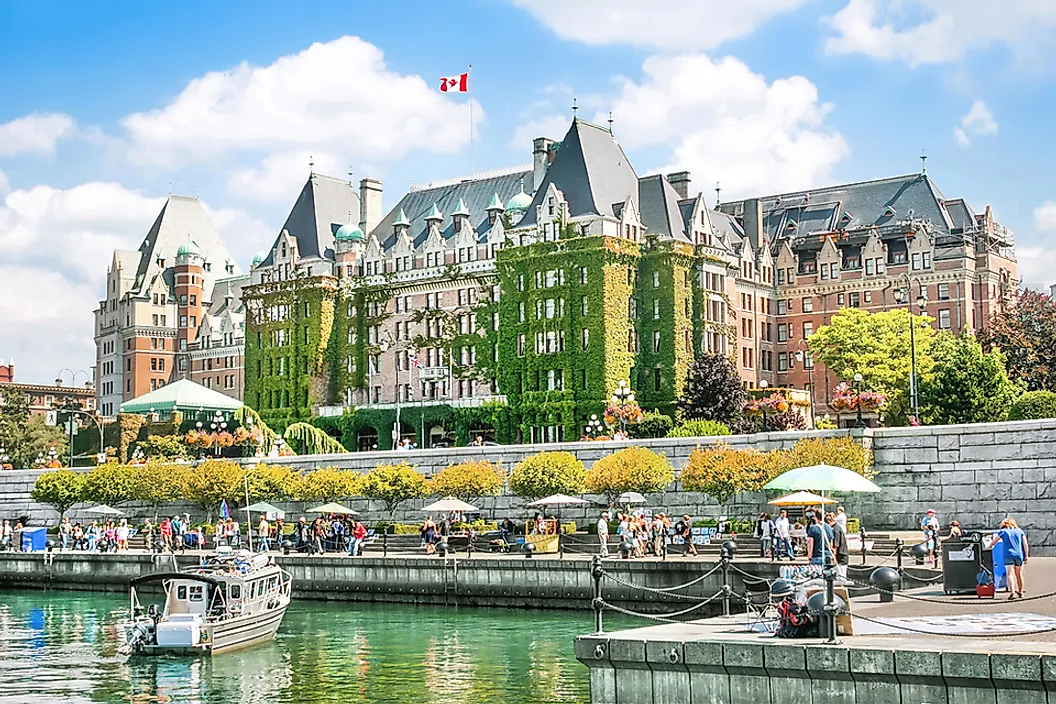What Is the Capital of British Columbia?

British Columbia is Canada's westernmost province. The capital city of British Columbia is Victoria, which is also referred to as "the Garden City." The Greater Victoria metropolitan area is inhabited by 383,360 people, while the city itself is home to 85,792 residents. Victoria is recognized its high quality of life, and the tourism and technology sectors are the backbone of its economy. Victoria's Chinatown is North America’s second oldest, after San Francisco.
History
The region was indigenously inhabited by the Songhees people and other Coast Salish communities. The first Europeans to explore the area arrived in the 1770s. Fort Albert was established in the region in 1843 as a fur trading post by the Hudson’s Bay Company. The name was changed to Fort Victoria in the same year, to honor Queen Victoria. Following the establishment of the crown colony in 1949, the area was developed into a town and was named the capital. The population of the town increased significantly in 1858 due to gold rush in the British Columbia region, and became a city in 1862.
When the Colony of British Columbia was formed in 1866, Victoria was chosen as its capital, and when British Columbia was integrated into the Canadian Confederation in 1871, Victoria became its provincial capital. The Port of Victoria was one of the most important channels for opium trade in during the second half of the 19th century. Most of its landmark buildings, such as the Empress Hotel, were built in early 20th Century.
Economy
Victoria is a technology hub, with technological firms generating more revenue for the city than any other sector. The annual income generated by the industry is about $3.15 billion, and it directly employs about 15,000 people. Maclean's declared Victoria the smartest city in Canada. Tourism is also a major earner for the city, with more than 3.5 million visitors spending a night in the city every year. It also receives about 500,000 visitors who tour Ogden Point in cruise ships during the day. The city also thrives on food processing industries, education, and services. The provincial and federal governments have their seats located in the city, and are also a major source of employment for Victoria residents. The city is a big shopping centre, with large malls like Hillside Shopping Centre, Mayfair Shopping Centre, and the Bay Centre.
Attractions
One of the main attractions in Victoria is the 75 hectare Beacon Hill Park, which is home to exotic species of fauna and flora, well groomed gardens, and many playing fields. It also gives a good scenic view of Olympic Mountains and the Juan de Fuca Strait. Numerous other parks can be found in the city. The city is home to many famous architectural wonders, like the Christ Church Cathedral, Empress Hotel, Victoria Police Department Station Museum,and the British Columbia Parliament Buildings. There are also galleries such as Royal British Columbia Museum, which houses IMAX National Geographic Theatre and the Art Gallery of Greater Victoria. Victoria's Chinatown also draws a lot of visitors due to its preservation.











